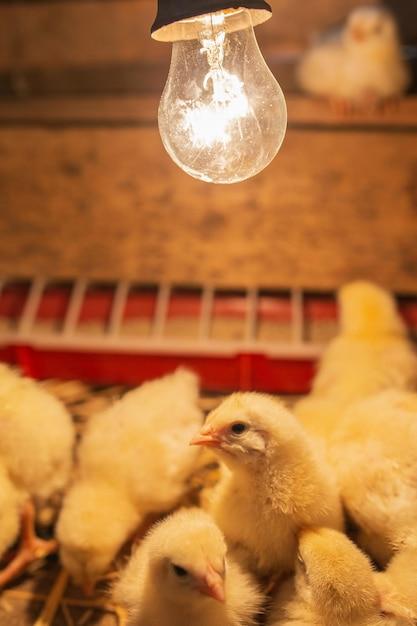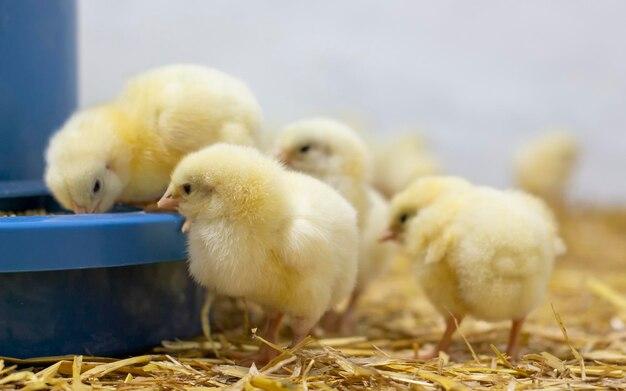When raising meat chickens, one of the crucial factors to consider is providing them with the right environmental conditions. Temperature plays a significant role in their growth and well-being, but it can also be confusing to determine the appropriate duration for using a heat lamp. In this blog post, we will explore how long meat chickens need a heat lamp and address other related questions to help you ensure the health and comfort of your flock.
Throughout this article, we will delve into various topics such as the vaccination needs of meat chickens, the ideal age for transitioning them to the outdoors, the recommended feeding practices, and identifying signs of cold stress. We will also discuss when the heat lamp can be removed from the coop and how chickens cope with colder temperatures. Additionally, we will touch upon whether chicken coops should be insulated for optimal comfort.
Join us as we provide helpful insights into the duration of heat lamp usage for meat chickens, along with valuable information to guide you in successfully raising your flock. Let’s get started!
How Long Should Meat Chickens Use a Heat Lamp
Meat chickens, being the plump and delectable creatures they are, require proper care and attention to ensure they grow into tasty morsels fit for any dinner table. One crucial aspect of their care is providing an appropriate amount of heat through a heat lamp. But the question remains, for how long should these poultry prodigies bask in the warmth?
The First Weeks: A Delicate Dance
When fluffy chicks first enter this world, they are as fragile as a teenager’s ego. They need the cozy embrace of a heat lamp to keep their tiny bodies warm. For the initial two weeks of their lives, these miniature cluckers should have access to a heat lamp around the clock, 24 hours a day, seven days a week. They appreciate the warmth as much as a turkey at Thanksgiving.
Gradual Temperature Decline: Preparing for Independence
Once those first two weeks have passed, our lil’ poultry pals gradually grow into their feathers and become more self-sufficient. This transition means they no longer require the heat lamp’s constant attention. It’s time to loosen the reins, so to speak.
Keep the heat lamp on during the third week, but consider dialing back the thermostat just a smidge. Reduce the temperature by five degrees Fahrenheit, giving our flock a taste of what it’s like to fend for themselves in a world that’s just a little cooler than they’re used to.
By the Fourth Week, They’re (Almost) All Grown Up
As our feathered friends approach their fourth week of existence, the training wheels can come off, and the heat lamp can be retired during the day. These chickens in training can handle the slightly chillier day-time temperatures without a hiccup.
However, George Orwell once wrote, “All animals are equal, but some animals are more equal than others.” And this rings true for our cherished meat chickens, as nighttime temperatures still require a bit of extra warmth. Thus, continue to provide a cozy heat lamp during the evening hours until they’ve reached the five-week mark.
The Five-Week Feat: Full Chicken-Hood
Congratulations, dear reader! Your meat chickens have graduated from feathery fledglings to full-fledged, independent poultry. By week five, they should possess the hardiness and resilience to navigate the world without the comforting glow of a heat lamp. It’s time to bid adieu to the warmth and trust in the natural progression of their growth.
So there you have it—the journey of our meat chickens and their gradual transition away from the embrace of a heat lamp. Remember, this timeline isn’t set in stone, and individual chickens may have different needs. Always keep a watchful eye on their behavior and adjust as necessary.
Now, go forth and raise your meat chickens with confidence, knowing that you’ve provided just the right amount of heat to turn them into culinary delights. Bon appétit!
FAQ: How Long Do Meat Chickens Need A Heat Lamp
Should I Vaccinate My Meat Chickens
Vaccination is essential for the health and wellbeing of your meat chickens. By vaccinating them, you protect them from various diseases and ensure they grow strong and healthy.
What Do 10-Week-Old Chickens Need
At 10 weeks old, your meat chickens require a balanced diet consisting of high-quality chicken feed. It’s also important to provide them with clean water, a spacious and secure coop, and proper ventilation to keep them comfortable.
When Can Meat Chickens Go Outside
Meat chickens can go outside once they have developed enough feathers to keep them warm. This usually occurs around 4 to 6 weeks of age. However, it’s crucial to monitor weather conditions and gradually introduce them to the outdoors to prevent shock.
How Long Do You Keep Meat Chickens
The ideal time to keep meat chickens is around 8 to 12 weeks, depending on the breed and desired weight. Be sure to monitor their growth and consult with experts to determine the optimum time for processing.
Do Chickens Get Cold at Night
Chickens are quite hardy birds, but they can get cold at night, especially during colder seasons. Providing appropriate shelter, such as a cozy coop and adequate bedding, helps keep them warm and safe from chilly temperatures.
How Can You Tell If Chickens Are Too Cold
If your chickens are huddling together, shivering, or their combs and wattles appear pale or frostbitten, they may be too cold. Pay attention to their behavior and appearance, as these cues can tell you if they need additional warmth or protection from the cold.
Do Meat Chickens Need a Heat Lamp
Meat chickens do require a heat lamp during their initial weeks to regulate their body temperature effectively. A heat lamp mimics the warmth they would naturally receive from a mother hen. As they grow, their feathering will provide insulation, and they will gradually require less heat.
How Much Do Meat Chickens Eat Per Day
On average, meat chickens consume approximately 1/4 to 1/3 pound of feed per day. However, it’s essential to monitor their appetite and adjust the quantity accordingly to avoid overfeeding or shortages.
How Many Meat Chickens Does a Family of Four Need
For a family of four, it’s generally recommended to raise around 12 to 16 meat chickens. This ensures an ample supply of fresh, homegrown chicken meat for delicious meals throughout the year.
How Often Do You Feed Meat Chickens
Meat chickens should be provided with a constant supply of fresh feed and water throughout the day. It’s best to offer them feed in controlled portions, allowing them to eat freely without excessive waste.
When Can You Take the Heat Lamp Off Chickens
You can remove the heat lamp once your meat chickens reach approximately 4 to 6 weeks of age. By this time, their feathering should provide sufficient insulation to keep them warm without supplemental heat.
Will My Chickens Freeze to Death
If provided with adequate shelter, insulation, and protection from extreme weather conditions, your chickens should not freeze to death. However, it’s crucial to monitor their environment and provide necessary measures to keep them safe during cold spells.
When Can Cornish Cross Go Outside
Cornish Cross chickens, a popular meat breed, can usually go outside around 4 to 6 weeks of age. As they grow rapidly and have fewer feathers than other breeds, monitor their body temperature and introduce them to outdoor conditions gradually.
Can You Leave a Heat Lamp On All Night
While it’s not recommended to leave a heat lamp on all night, especially as the chickens grow older, it is essential to provide them with a heat source during cooler evenings. Consider using a safer alternative, such as a heat plate or brooder, which reduces the risk of fire hazards.
How Cold Can Meat Chickens Handle
Meat chickens can handle temperatures as low as 50°F (10°C) without suffering ill effects. However, it’s essential to gradually acclimate them to colder temperatures and provide adequate shelter and protection when faced with extreme weather conditions.
How Cold Can Chickens Tolerate at Night
Chickens can tolerate temperatures around freezing (32°F or 0°C) at night, provided they have a draft-free, insulated coop, and sufficient bedding to keep them warm. However, it’s advisable to monitor their behavior and ensure their comfort during colder nights.
Should a Chicken Coop Be Insulated
Insulating a chicken coop offers numerous benefits, including temperature regulation, moisture control, and increased protection from harsh weather conditions. While not always necessary, insulation can help ensure the comfort and wellbeing of your meat chickens, especially during colder seasons.
Remember, raising meat chickens can be a rewarding endeavor. By closely monitoring their needs, providing proper care, and understanding their requirements at different stages, you can successfully raise healthy and delicious birds.

